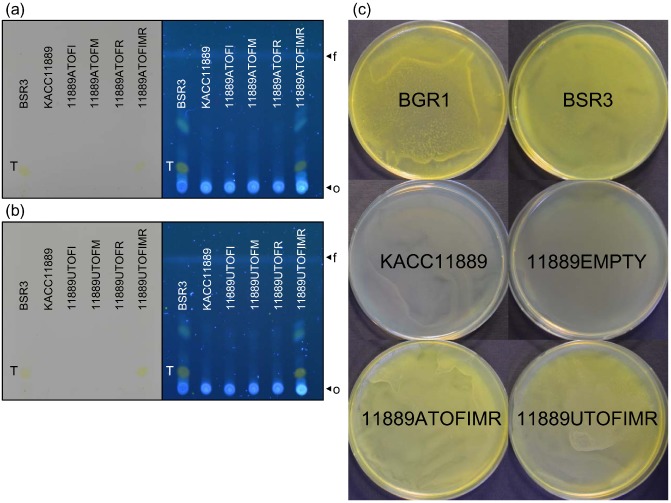Figure 3.

Restoration of toxoflavin production by genetic complementation of strains of Burkholderia gladioli KACC11889. (a) Thin‐layer chromatography (TLC) analysis in complementation strains receiving the tof genes of B. gladioli BSR3. Four complementation strains were tested: 11889ATOFI, 11889ATOFM, 11889ATOFR and 11889ATOFIMR. Burkholderia gladioli BGR3 and KACC11889 are indicated to the left of the plates as a control. The toxoflavin produced was evaluated visually in daylight and under UV light at 365 nm (T, toxoflavin). The origin (o) and solvent front (f) on the TLC plate are shown. (b) TLC analysis of the complementation strains that received the tof genes of B. glumae BGR1. Four complementation strains were tested: 11889UTOFI, 11889UTOFM, 11889UTOFR and 11889UTOFIMR. (c) The pigmentation phenotype of the complementation strains 11889ATOFIMR and 11889UTOFIMR. Burkholderia gladioli BSR3 and B. glumae BGR1 were used as positive controls. The strain 11889EMPTY, which was created by introduction of the empty vector pBBR1MCS‐2, served as a negative control. Freshly grown bacterial culture was spread on a Luria–Bertani (LB) agar plate and photographed after 48 h of incubation at 30 °C post‐inoculation.
